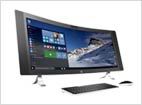I took a trip to Toronto this week to visit Cisco’s new Toronto Innovation Center. I go to a number of openings throughout the year but what impressed me most about this one was the support of both local and central Canadian government and the fact that they didn’t really talk about the most interesting stuff at the center. A lot of firms are doing innovation centers but this is one of the few that actually showcases in its design the innovation it promotes. Let’s talk about innovation centers in general and then what makes Cisco’s effort unique.
Innovation Centers
A number of vendors are doing innovation centers with the dual goal of helping customers solve problems and use the vendor’s technology in the process. One of the big issues with innovation is that the creativity used can take the customer in any one of a number of directions, most of which aren’t tied to any one vendor. These centers are a way for the vendors to collect information on creative problem-solving, which can then be turned into products or used to help other customers with similar problems.
One of the recurring problems is a tendency to focus on invention rather than discovery of past solutions that have been vetted. These programs often provide a great showcase for the emerging class of AI systems that can match problems with similar solutions that have already been vetted so that folks aren’t constantly reinventing the wheel.
What is often kind of strange is that innovation centers in and of themselves often aren’t very innovative. They are places where people talk about innovation, but the center itself wasn’t designed to showcase it. This is where the Cisco Toronto effort stands out as different, and what was really kind of strange is that is the part they didn’t really talk about.
Cisco Innovation Exemplification
I wouldn’t have picked up on this hadn’t I come early and sat in the lobby waiting for the event to start. Running on several video screens were a number of the key innovations that had come out of centers like this. I noticed one of them was a smart elevator and then I realized that this was the same elevator I’d taken to the venue. There are no floor buttons on this elevator; if you work there, it knows where you need to go.
Other videos showcased that the office used a flexible plan in which employees come in and are assigned a desk dynamically and then that desk adjusts itself automatically for the employee’s custom needs. Lighting and HVAC was also automatic based on occupancy and preferences, and meeting rooms were dynamically assigned based on needs. Group rooms had automatic roll-up walls so that, if occupancy required it, room size could be doubled or tripled.
But the big hidden story was that the facility had cost $700K less to build because of the heavy use of connected devices; configuration changes were drop-dead simple because they didn’t need to rewire (and the Electricians’ Union was ticked off). They really don’t need electricians to make changes, because the devices are low voltage and generally use networking cable rather than power lines to work. Currently, Cisco is promoting retraining so that the electricians aren’t made obsolete. The result was so impressive that the management company that manages the building is using this as a basis for new buildings and to retrofit old ones.
What Was Missing
Cisco is one of the few remaining powers in video conferencing and they had a variety of their offerings throughout the facility. One of the big problems with video conferencing is that people who are remote often feel they are left out of side conversations. At CES, there were a ton of Telepresence Robots, allowing a remote user to take over the robot and then interact as if they were in the room.
A less common demonstration at CES involved taking a big screen monitor/TV and putting it on its edge and in a door like a frame. This was to encourage side meetings through virtual doors so people could stand and talk one on one. Kind of a virtual watercooler allowing people who are remote to more naturally interact with folks on site. Neither of these solutions was present at Cisco and, given that they both foster collaboration and are solidly in Cisco’s wheel house, I was a tad surprised.
Wrapping Up
A lot of companies are trying to wrap their arms around how difficult it is to innovate. The bigger the firm, the more risk-averse it is and the more likely innovation will be pushed aside and the poor saps trying to innovate shot. Having places where not only customers can go to innovate but that drive innovation back into the company is important. The Cisco effort is one of the exceptions and it is an impressive showcase of how to use technology to not only save money but to create a far more attractive and flexible workspace. If you are in Toronto, you should check it out. Make sure you watch the video and ask about how they actually built the place, since that’s the strongest point of proof that what they’re doing actually works.
Rob Enderle is President and Principal Analyst of the Enderle Group, a forward-looking emerging technology advisory firm. With over 30 years’ experience in emerging technologies, he has provided regional and global companies with guidance in how to better target customer needs; create new business opportunities; anticipate technology changes; select vendors and products; and present their products in the best possible light. Rob covers the technology industry broadly. Before founding the Enderle Group, Rob was the Senior Research Fellow for Forrester Research and the Giga Information Group, and held senior positions at IBM and ROLM. Follow Rob on Twitter @enderle, on Facebook and on Google+.



